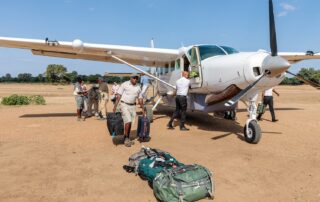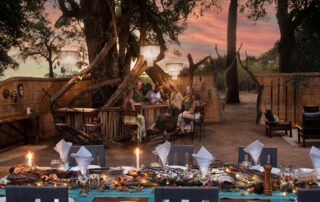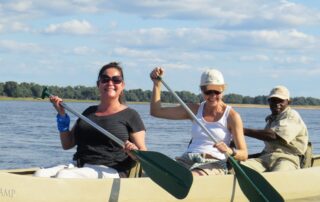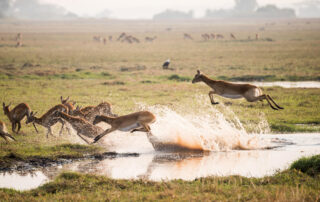Simalaha Community Conservancy (original) (raw)
- Home
- What to see
- Where to stay
- What to do
- Plan your Trip
- Travel Agents & Operators
* Zambia
* Europe
* United States
- Zambia
- Map
- News
SIMALAHA COMMUNITY CONSERVANCY

Meaning ‘come together’, Simalaha is an apt name for the community conservancy inspired and driven by the Sesheke and Sekhute chiefdoms. Bordering the Zambezi River on the Zambezi-Chobe floodplain, Simalaha is where wildlife and people come together and co-exist under one sky as they once did many years ago.
The vision of the Sesheke and Sekhute chiefs to rehabilitate and conserve the region has become a reality through a partnership with Peace Parks Foundation. The development of this wildlife conservancy and the implementation of viable natural resource management have been key in uplifting local communities, creating income-generating opportunities through nature-based economies and tourism opportunities.
Simalaha forms part of the world’s largest trans-frontier conservation area, the Kavango Zambezi Transformation Conservancy Area (KAZA) that spans five countries and 520 000km² / 323 113mi². The conservancy is fundamental to re-establishing wildlife populations and their migration routes through KAZA.
Wildebeest, zebra, red lechwe, puku, hartebeest, impala, waterbuck, giraffe, buffalo, eland and sable have been re-introduced to the plains. More and more wildlife can start to traverse old migration paths safely and elephants have been seen walking their historical timelines. The days when the flood plains were teeming with wildlife, the forests thick and the people benefiting from this rich environment, are once more slowly being realised.
MORE INFO
- Area: 180 000ha / 444 780ac of which 40 000ha / 9 900ac is a wildlife sanctuary
- Founded: 2012
- Province: Southern Zambia
- Co-ordinates: 17°31’27.3?S 24°57’35.9?E
Simalaha is open to horse safaris. This is a summer rainfall area, with short-lived but dramatic thunderstorms from November to April. May to September sees cooler temperatures, no rain and shorter grass but the heat does build up steeply in October, the hottest and driest month.
A 120km / 75mi drive takes you from Harry Mwanga Nkumbula International Airport in Livingstone to Simalaha.
There are no major predators in Simalaha but plains game and grazers are well represented.
Some notables to look out for are collared palm thrush, Dickinson’s kestrel and western banded snake eagle. Common species include spurwings, Egyptian geese and sacred and glossy ibises.
LATEST NEWS
Zambia Airline Expands Offering
Memorable Journeys, founded in 2016 by Solly Tevara, has announced an extension of its air travel services in the country. The company services all the major safari areas including South Luangwa, Lower Zambezi, Kafue and Livingstone to reach the Victoria [...]
Mwamba Reopens After Full Refresh
Mwamba Camp in South Luangwa National Park is up-and-running after an extensive series of upgrades. The chalets now feature woven bamboo on the exterior and interior, with a layer of matting and a screen in between to keep out insects [...]
Canoeing Impacted by Water Levels in Lower Zambezi
Some safari operators in Lower Zambezi National Park are changing how they undertake canoeing activities on the Zambezi River. Areas such as the Chifungulu and Nkalange Channels are currently too low to pass and, where possible, canoes are being navigated [...]
New Lechwe Herd for Kafue – and Possible Cheetah Cubs
Dry season is proving productive in Kafue National Park with plenty of new arrivals and exciting sightings. First on the list is a herd of 400 Kafue lechwe (Kobus leche kafuensis) that were released around Lake Itezhi-Tezhi. Kafue lechwe are [...]
This website uses cookies, Some of the cookies we use are essential for the site to work. By continuing to use our site you agree to us using cookies in accordance with our Cookie Policy. OK
Want to receive the latest
Zambia travel news?
Please subscribe to our newsletter:



